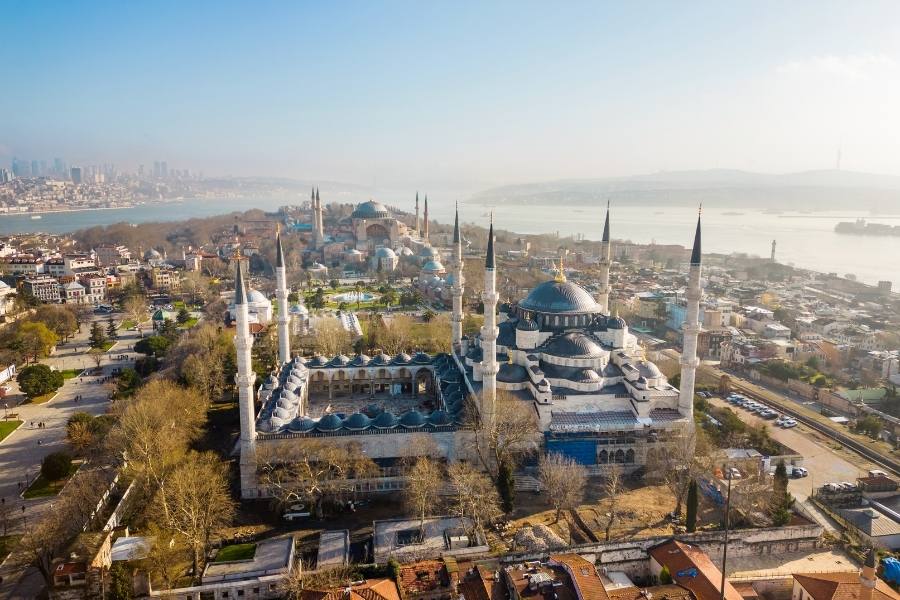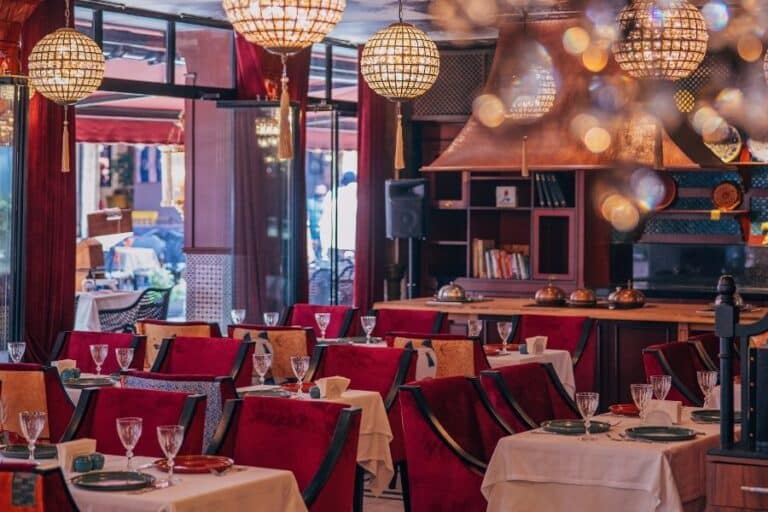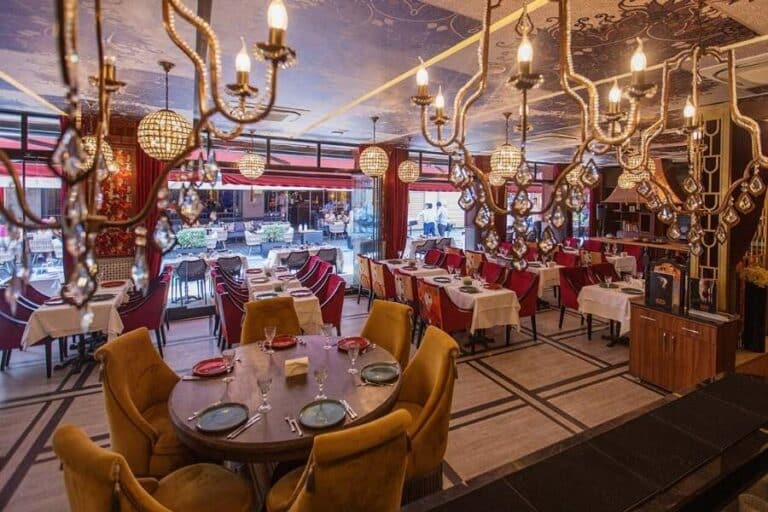Founded in the 7th century BC, Istanbul, originally known as Byzantion, has stood at the crossroads of civilizations for centuries. This ancient city, reimagined by Roman Emperor Constantine and renamed Constantinopolis, has been a pivotal stage for historical events that shaped not only the region but also the broader contours of world history. Its strategic position straddling two continents made it a coveted jewel among empires, leaving an indelible mark on its architectural, cultural, and political fabric. Istanbul’s transformation during the Roman era, especially as the Eastern capital of the Roman Empire, set the stage for its enduring legacy as a melting pot of cultures and ideas.
The city’s geographical location, bridging Asia and Europe, has always given it a unique advantage and appeal. Over the centuries, it became a bustling metropolis and a vital trade hub, facilitating the exchange of goods, ideas, and cultures. This blend of influences is evident in Istanbul’s diverse architectural styles, languages, and traditions. From the majestic Hagia Sophia, which has stood as a Christian basilica, a Muslim mosque, and now a museum, to the labyrinthine Grand Bazaar, every corner of Istanbul tells a story of convergence and transformation.
Moreover, Istanbul’s role in history extends beyond its physical allure. It has been a beacon for artists, merchants, scholars, and travelers, each adding to its rich tapestry. The city has not only witnessed but also contributed significantly to the major cultural and political shifts in history. From the rise and fall of empires to being a center for religious and intellectual discourse, Istanbul has mirrored the changing dynamics of the world. Its enduring charm lies not just in its historic landmarks but also in its ability to continuously reinvent itself while holding onto its deep-rooted heritage.
Content Suggestion: Sultanahmet’s Favorite Place: Deraliye Restaurant
The Ottoman Empire and Istanbul
The conquest of Istanbul by Sultan Mehmed II in 1453 marked a turning point in the city’s history. Renamed “Constantinople,” it blossomed as the vibrant capital of the mighty Ottoman Empire. This era saw a profound transformation in the city’s architecture, culture, and social fabric. The conversion of Hagia Sophia into a mosque is perhaps the most symbolic of these changes, reflecting the shift in religious and cultural dynamics. The construction of the Topkapi Palace, serving as the residence and administrative center for Ottoman Sultans, became a symbol of the empire’s power and opulence.
Furthermore, Istanbul’s skyline was reshaped with the addition of numerous historic mosques and madrasas, such as the majestic Blue Mosque and Süleymaniye Mosque, showcasing the zenith of Ottoman architectural and artistic achievement. The city also became a melting pot of cultures, languages, and religions, with vibrant bazaars and neighborhoods reflecting a diverse populace drawn from across the empire.
The Republic Era and the Evolution of Modern Istanbul
The proclamation of the Republic of Turkey in 1923 heralded a new era for Istanbul. Though it relinquished its status as the capital to Ankara, Istanbul retained and even bolstered its role as a cultural and economic powerhouse. In the 20th century and beyond, the city has embraced modernization while preserving its historical heritage, striking a balance between its storied past and dynamic future.
Modern Istanbul is a tapestry of contrasts and continuity. It’s where ancient mosques and palaces coexist with skyscrapers and contemporary art galleries. The city continues to be a hub for commerce, arts, and tourism, drawing millions from around the globe. Its strategic position as a bridge between continents continues to make it a crossroads for international dialogue and exchange. The restoration of historical landmarks alongside the development of new cultural spaces like Istanbul Modern reflects the city’s ongoing commitment to being a global metropolis that honors its past while looking confidently towards the future.
Cultural Fabric of Istanbul
A Melting Pot of Heritage
Istanbul’s cultural fabric is a vivid tapestry woven from the legacies of Byzantine, Roman, and Ottoman civilizations. Each layer of its history contributes to the city’s unique charm. Museums like the Hagia Sophia and the Istanbul Archaeology Museums offer windows into its past, showcasing artifacts that span millennia. Historical sites such as the Sultanahmet District and the Galata Tower tell tales of ancient empires and medieval endeavors. Art galleries, both classical and contemporary, like Istanbul Modern and Pera Museum, exhibit the city’s evolving artistic expression. Moreover, Istanbul’s calendar is dotted with festivals celebrating everything from traditional Turkish music to contemporary film, encapsulating the city’s vibrant and diverse cultural scene.
Gastronomy and Arts
Istanbul’s culinary landscape is a delectable testament to its history. The city’s cuisine, infused with the essence of Ottoman court cooking, also incorporates flavors from across the Mediterranean and Middle East. From the street vendors selling simit and kebabs to the sophisticated restaurants offering modern interpretations of classic dishes, Istanbul’s gastronomic offerings are a feast for the senses. The city’s artistic endeavors are equally rich. Its music scene, spanning traditional Turkish tunes to contemporary genres, resonates in venues across the city. Istanbul also thrives in the visual arts, with numerous galleries and street art spaces showcasing the work of both local and international artists, reflecting a city that’s constantly in dialogue with the global art community.
Fusion of Modern and Historical Life
Istanbul today stands as a city where history and modernity intertwine seamlessly. The juxtaposition of ancient monuments and modern architecture symbolizes the city’s ongoing evolution. Districts like Nişantaşı and Beşiktaş buzz with contemporary life, hosting chic boutiques, luxury hotels, and vibrant nightlife, set against the backdrop of historical architecture. The Bosphorus Strait, a natural divide between Europe and Asia, is lined with both opulent yalıs (waterside mansions) and stylish modern developments, mirroring the city’s diverse socio-cultural fabric. This blend of traditional charm and modern sophistication makes Istanbul a unique urban experience, attracting a cosmopolitan array of visitors and residents alike.
Istanbul’s allure lies in its ability to harmonize its historical depth with cultural richness and contemporary vitality. As a city that has hosted various civilizations, it holds a special place in the annals of world history. Its ability to offer unforgettable experiences, from exploring ancient ruins to enjoying modern luxuries, cements its status as one of the world’s most fascinating and enduring cities.









